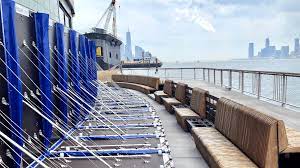
Introduction
San Diego, with its stunning coastline and vibrant communities, is not immune to the challenges posed by flooding. Whether caused by heavy rains, storm surges, or other factors, floods can have a significant impact on homes, businesses, and infrastructure. However, in the aftermath of a flood, the spirit of resilience shines through as the community comes together to navigate the path of flood recovery. This article explores the process of flood recovery in San Diego, highlighting the steps to rebuilding and restoring the affected areas.
Facing the Aftermath of a Flood
Floods can leave a trail of destruction, affecting not only physical structures but also emotional well-being. Recovering from a flood requires a combination of resources, planning, and community support.
The Journey of Flood Recovery
Flood recovery in San Diego involves a series of crucial steps aimed at restoring normalcy and resilience to the affected areas:
1. Safety First: After a flood, prioritize safety. Ensure that the area is safe to enter and assess potential risks before beginning any recovery efforts.
2. Assessment: Evaluate the extent of the damage caused by the flood. Document the damage through photographs and notes to assist with insurance claims.
3. Contact Your Insurance Provider: Get in touch with your insurance company as soon as possible. Understand your coverage and the procedures for making a claim.
4. Professional Assistance: Depending on the severity of the damage, consider seeking professional assistance for flood damage restoration. Trained experts have the equipment and knowledge to restore affected areas effectively.
5. Cleanup and Decontamination: Proper cleanup is essential to prevent mold growth and contamination. Remove mud, debris, and damaged items, and thoroughly clean and disinfect affected surfaces.
6. Drying and Ventilation: Ensure that the area is thoroughly dried and ventilated to prevent mold growth and further damage.
7. Repairs and Restoration: Begin repairing and restoring damaged structures, electrical systems, plumbing, and other essential components.
8. Document Everything: Keep thorough records of all expenses related to flood recovery. This includes invoices, receipts, and communication with contractors.
9. Engage with the Community: San Diego is a community known for its spirit of unity. Engage with local organizations and community groups that offer support and resources for flood recovery.
10. Emotional Support: Flood recovery can be emotionally taxing. Seek support from friends, family, and mental health professionals to cope with the emotional aftermath.
11. Preparedness for the Future: Learn from the experience and take steps to enhance flood preparedness for the future. This could involve investing in flood-resistant infrastructure, having emergency plans in place, and staying informed about local weather conditions.
Conclusion
Flood recovery in San Diego is a journey that requires patience, determination, and community collaboration. While the process can be challenging, the strength of San Diego’s residents shines through as they rebuild and restore their homes and lives. By following the necessary steps, engaging with professionals, and drawing on community support, those affected by floods can overcome adversity and emerge stronger. As San Diego continues to embrace its spirit of resilience, the city demonstrates that even in the face of challenges, there is hope and the ability to rebuild stronger than before.
Leave a Reply